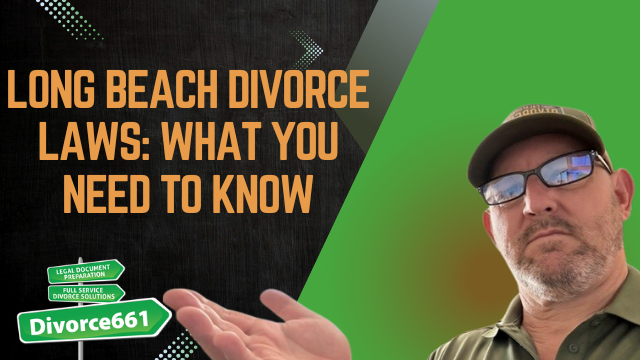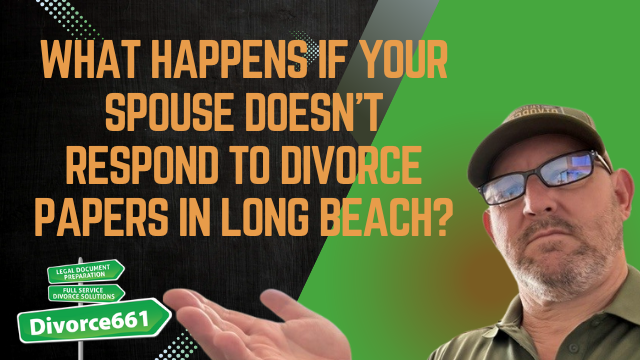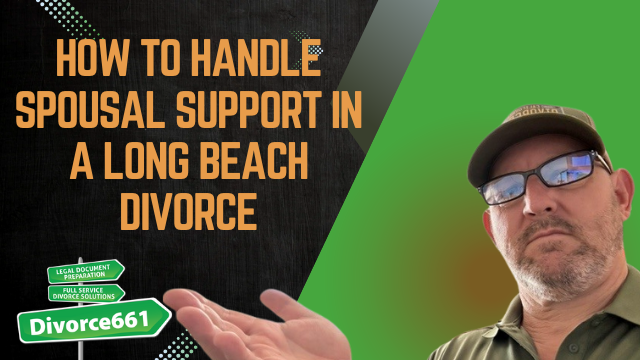How to Finalize a Divorce in Long Beach in 6 Weeks
Finalizing a divorce in Long Beach does not have to be slow or stressful. With the Los Angeles County Superior Court’s full electronic filing system and clear agreement between spouses, your case can be fully prepared, signed, and submitted in a matter of weeks. The one statutory limit to remember is California’s six month waiting period before a divorce becomes final. You can complete everything long before that date and time your final judgment to take effect exactly when the six month clock runs out.
What makes a fast Long Beach divorce possible
Speed comes from two things: technology and agreement. Los Angeles County’s e-filing allows every document to be handled remotely and quickly. The real multiplier is when both spouses are in full agreement on the major issues. That means agreement on property division, spousal support, and custody and support if children are involved. When those issues are resolved, the rest becomes administrative.
“We can handle every step of your case remotely and move as fast as you’re ready.”
Step-by-step: How a fast uncontested divorce works
- File the case with the Los Angeles County Superior Court using electronic filing. This starts the process and creates the official case number.
- Serve your spouse with the appropriate papers. Service starts the six month waiting period for the final judgment.
- Complete financial disclosures. Both parties must exchange completed financial documents so the court can see assets, debts, income, and expenses.
- Prepare a full settlement agreement that addresses property division, support, custody, and any other issues. This becomes the basis for the final judgment.
- Sign and notarize the settlement agreement and the judgment forms. Proper execution is critical to avoid delays or rejections.
- Submit the judgment package to the court electronically. Once submitted, the court will process the paperwork and the judgment will become final when the statutory waiting period expires.
Timing: Why six weeks of work can equal a six month finalization
The six month waiting period is a statutory requirement in California. That said, all of the work that leads to the final judgment can be completed well before that end date. The practical approach is to prepare and submit the entire judgment package in advance and time the service date so the divorce becomes final exactly on the day the six month clock runs out. This provides certainty and eliminates unnecessary waiting.
Real example
A Long Beach couple recently completed filing, service, financial disclosures, and submission of their final judgment in just over two weeks. The court will finalize their divorce automatically on the six month mark from service. In short, all of the paperwork and legal steps were done quickly while the statutory finalization date remains unchanged.
Who is this fast process for?
- Couples who are amicable and agree on all divorce issues.
- People who want a remote, efficient solution with no court appearances.
- Those who want accurate, court-approved paperwork handled professionally.
When it will not work
If you and your spouse disagree on property division, support, child custody, or other core issues, a contested divorce will take longer and may require hearings, negotiations, or litigation. Complex asset divisions, business interests, or high-conflict custody disputes are not suitable for an expedited administrative approach.
Benefits of preparing your divorce quickly and correctly
- Save time by completing all steps remotely and avoiding repeated court appearances.
- Avoid delays that come from improperly completed paperwork or missed disclosures.
- Reduce stress by handling every step with a clear timeline and professional support.
- Predictable finalization because you can time service and submission to match the six month statutory period.
Common questions
How long does it actually take?
All administrative work can be done in a few weeks when both parties agree. The divorce judgment will become final at least six months after the date of service due to California law.
Do I need to appear in court?
No. For amicable, uncontested cases handled correctly, there are typically no court appearances required.
What if we have children?
Child custody and support must be addressed in the settlement agreement. When both parents agree and complete the required disclosures, the case can still move quickly. If disagreements arise, the timeline will extend to resolve those issues.
How to get started
If you are ready to move quickly, having accurate paperwork and a clear plan is essential. A flat fee remote service can prepare and submit everything, handle e-filing, and guide you through financial disclosures and notarizations so there are no surprises.
Complete your paperwork correctly, agree on the issues, and the court’s electronic system will let you finish the legal work fast while the six month statutory period runs its course.
For a straightforward, efficient path to finalizing a divorce in Long Beach, schedule a consultation to discuss your situation and timeline. With the right preparation, you can have the entire case ready and submitted in weeks and finalized at the earliest legally possible date.










